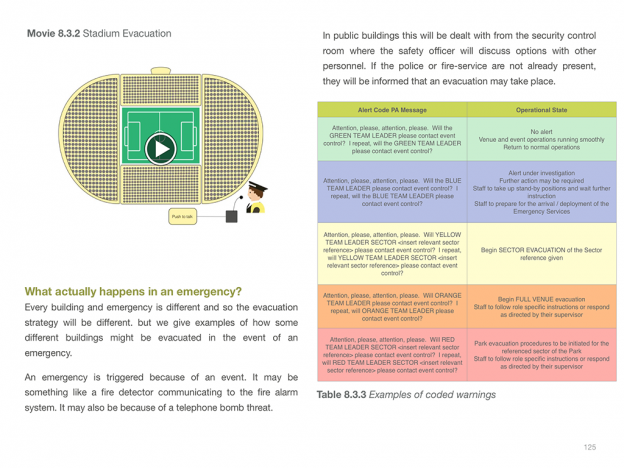
Neil Voce of Application Solutions (Safety and Security) reviews the second edition of RH Consulting’s Guide to Voice Alarm Systems.
An old anecdote suggests that “the great thing about standards is that there are so many of them”, and one of the key selling points of RH Consulting’s e-tome on voice alarm systems is that it shares a lot of knowledge on those many standards. It de-mystifies the history of the standards that we have, their inter-relations and hierarchy and forewarns us of future standards such as a German standard for active loudspeakers. It even gives some guidance on how one might get involved in shaping the legal structure and standards. We need to know this because that’s what the EU’s CPR (Construction Products Regulations) now control – the laws regulating how a PA system can instruct occupants to leave a building and therefore qualify as a voice alarm (VA).
On a practical level, the guide includes a wealth of information in easy-to-digest sections on the history of the technologies and what makes a voice alarm and how it should perform. It provides information suitable to get an audio engineer who’s never stepped beyond a public address system into the world of voice alarm. The authors, Roland Hemming and Richard Northwood, make the point that reading the book doesn’t make you an expert or even someone who should set about installing a system without having experts on hand, but it would give you all the background to ask the right questions and – if you use the study card system in the glossary, enough acronyms to give anyone a run for their money with VA tech-speak.
In addition to the general text, the use of the e-book format allows for a considerable number of simple and nicely animated illustrations demonstrating system performance and connectivity.

One potential difficulty for the book is that it does cover a lot of ground aimed at a variety of levels of reader. When I shared the guide with a colleague who doesn’t work with VA every day, they couldn’t quite summon enthusiasm for digging into the interpretation issues of EN54; but for those who are interested in that aspect, they are likely to fly through the chapters devoted to VA basics and elementary system design. One imagines that if a company involved in PA/VA were to purchase the book, then there’s something for everyone, but as a personal purchase you aren’t likely to need it all.
It is revealed that even for Hemming, who sits on EN54 committees and helps to draft the regulations, there isn’t always a clear way forward to comply. There are a number of hints of legal uncertainty around certain types of solutions and products. Mentioned in that list are individually tested products, IP switches, powered speakers and free-form DSP – all of which are found in the market and in installs in the UK and EU generally. There is also the statement that “it is currently almost impossible to make any large project EN54 compliant” which as a summary to a lengthy section on EN54 generally, leaves one to wonder if that means every large building is failing in its legal duty to the Essential Safety Requirement of the CPR to provide “safety in case of fire”. If so, surely that leaves all practitioners of VA open to legal proceedings – which is certainly thought provoking.
If you have any active role in VA, this book is almost certainly going to tell you something you didn’t know. It’s a valuable addition to your library, and, if you are involved in the voice alarm business internationally, the comprehensive comparative tables on standards requirements alone justify the investment of the time and money.
Guide to Voice Alarm Systems, 2nd edition is available for download worldwide on the iTunes book store for iPhone, iPad and Mac (UK price £24.99).







